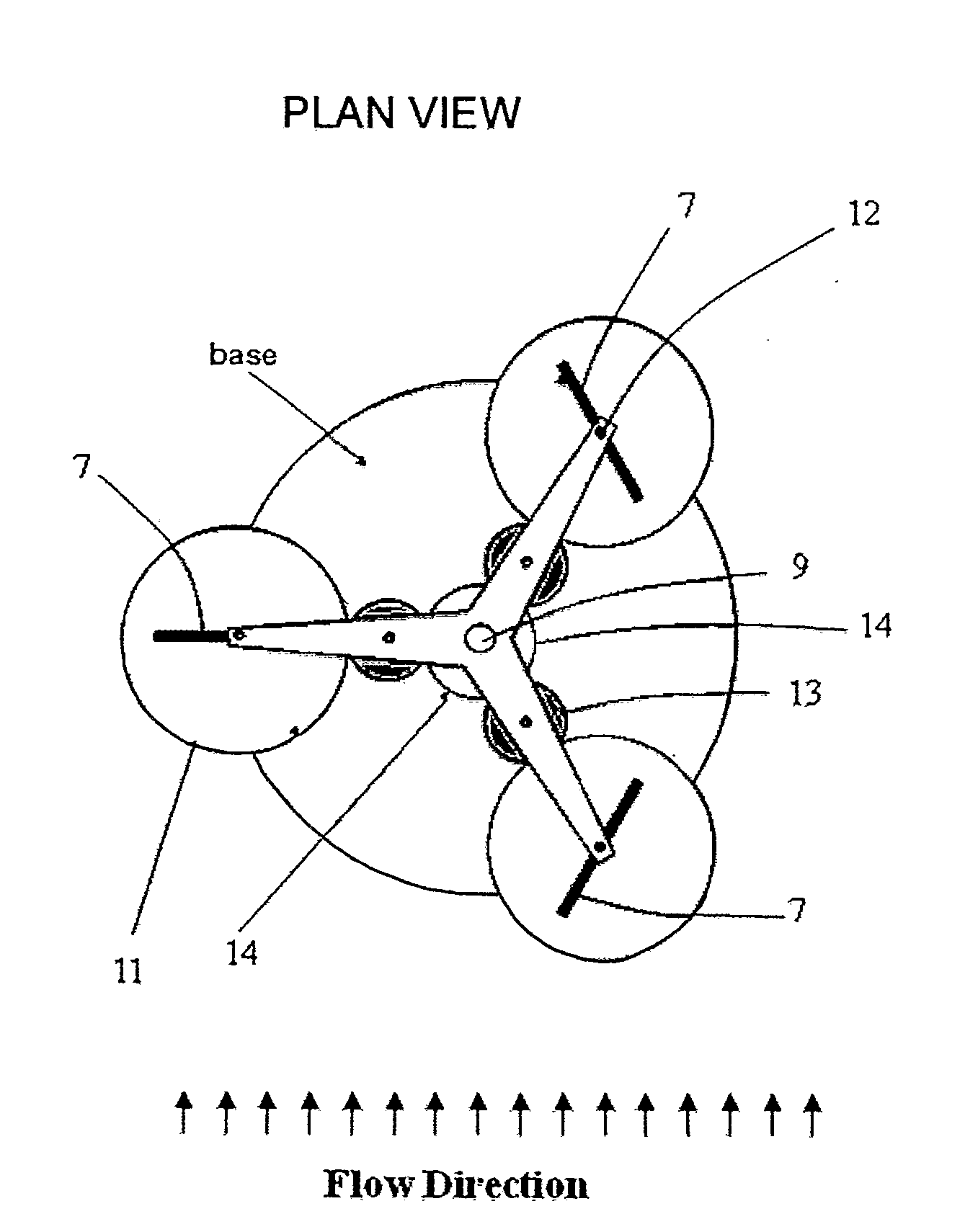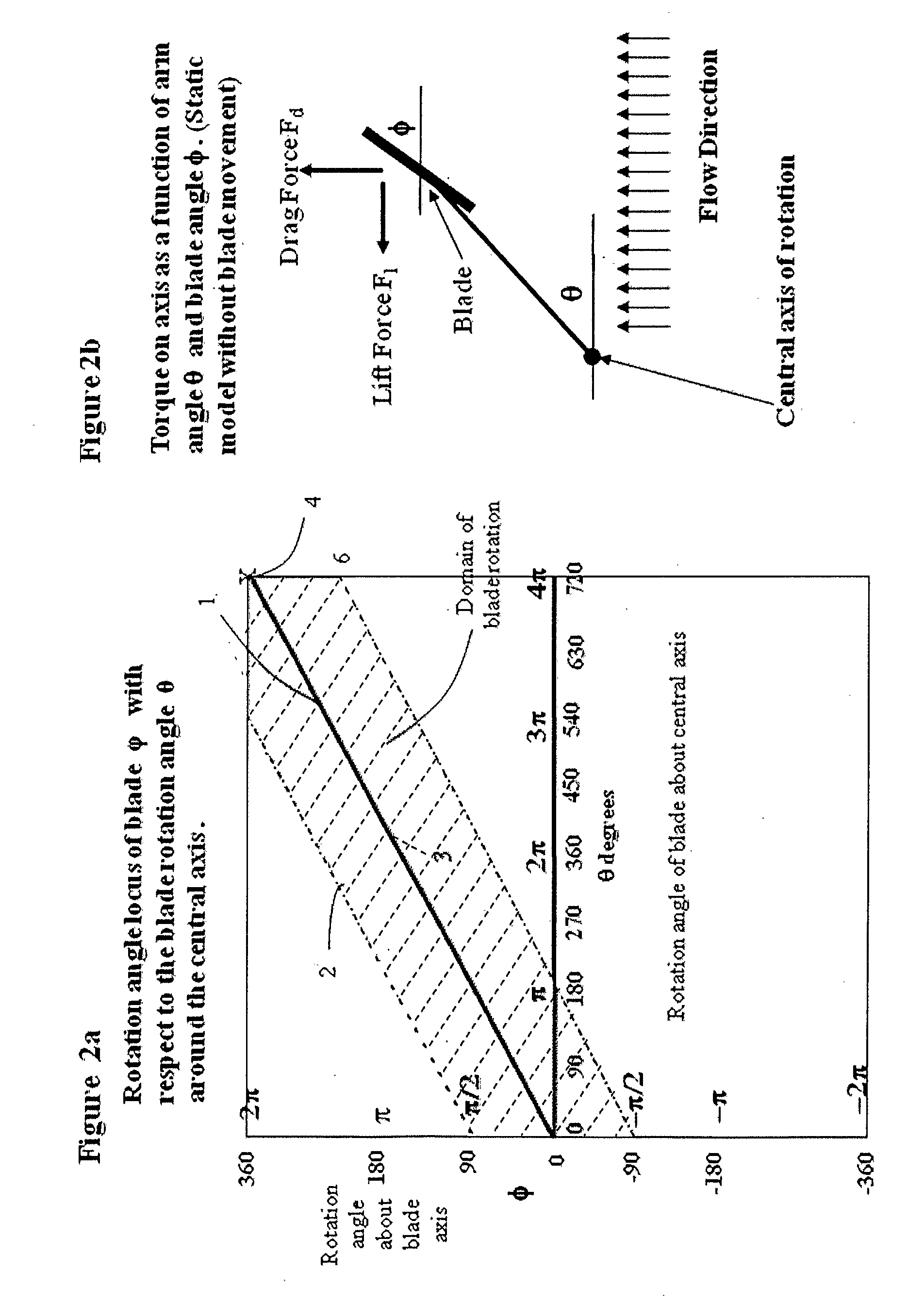Fluid turbine
a technology of flue gas turbine and turbine blade, which is applied in the direction of propellers, propulsive elements, water-acting propulsive elements, etc., can solve the problems of reducing efficiency, design that has not found favour for wind generation, and reducing efficiency, so as to reduce the drag effect of the other two blades and the maximum drag or momentum change
- Summary
- Abstract
- Description
- Claims
- Application Information
AI Technical Summary
Benefits of technology
Problems solved by technology
Method used
Image
Examples
Embodiment Construction
[0031]Referring to FIGS. 3a and 3b, the turbine blade 7 is fixed by its spindle 12 to top and bottom plates 10 where the axis is located by holes in the plates through which the spindle passes. A gear 11 is fixed to the spindle 12. A gear set 13 is allowed to freely rotate about a spindle 8 fixed to the bottom plate 10. This gear set meshes with gear 11. Gear 14 is fixed to a cylindrical outer spindle 15 which is also fixed to a base 16. Gear set 13 also meshes with gear 14 which may be eccentrically mounted or non-circular. Gear set 13 comprises either one or two gears fixed on the same spindle and rotate together such that a top gear meshes with gear 11 and a bottom gear meshes with gear 14 or vice versa. The two gears comprising set 13 may be different diameters or one or both may be eccentrically mounted or non-circular. The gear set comprising 11, 13 and 14 acts such that when the spindle 12 is rotated about the central axis 9, the blade rotates about its axis 12 within the dom...
PUM
 Login to View More
Login to View More Abstract
Description
Claims
Application Information
 Login to View More
Login to View More - R&D
- Intellectual Property
- Life Sciences
- Materials
- Tech Scout
- Unparalleled Data Quality
- Higher Quality Content
- 60% Fewer Hallucinations
Browse by: Latest US Patents, China's latest patents, Technical Efficacy Thesaurus, Application Domain, Technology Topic, Popular Technical Reports.
© 2025 PatSnap. All rights reserved.Legal|Privacy policy|Modern Slavery Act Transparency Statement|Sitemap|About US| Contact US: help@patsnap.com



